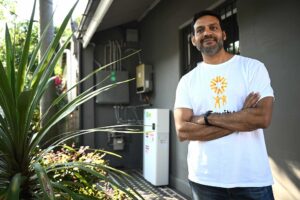The world needs to achieve massive and rapid declines in greenhouse gas emissions – including an aim to halve emissions by 2030 – to keep global warming within safe levels, a new report from the Intergovernmental Panel on Climate Change (IPCC) has warned.
The stark warning has been detailed in the latest working group report published by the IPCC and represents an authoritative expert statement of the world’s climate mitigation task, and the strong language comes despite intense wrangling among governments in recent days.
The IPCC warns that keeping global warming to just 1.5 degrees above pre-industrial levels is rapidly becoming beyond reach without efforts to substantially cut greenhouse gas emissions across all economic sectors.
“It’s now or never, if we want to limit global warming to 1.5°C (2.7°F),” IPCC Working Group III Co-Chair Jim Skea said.
“Without immediate and deep emissions reductions across all sectors, it will be impossible.”
Two previous IPCC reports have focused on the physical science basis for climate change and the projected global impacts of rising temperatures. This third in the series, released on Tuesday, details the mitigation efforts required to avoid the worst impacts of climate change.
The IPCC pointed to the substantial cost reductions in technologies like solar and wind energy, and battery storage technologies – falling by up to 85 per cent over the last decade – as providing a positive opportunity to achieve the dramatic and necessary cuts to global emissions.
“We are at a crossroads. The decisions we make now can secure a liveable future. We have the tools and know-how required to limit warming,” IPCC chair Hoesung Lee said.
“I am encouraged by climate action being taken in many countries. There are policies, regulations and market instruments that are proving effective. If these are scaled up and applied more widely and equitably, they can support deep emissions reductions and stimulate innovation.”
The IPCC found that to keep warming to within 1.5 degrees, it would require global emissions to peak by 2025 and be cut by at least 43 per cent by 2030. It would also require net zero emissions to be achieved globally by the 2050s.
The report stresses that global temperature increases will not stabilise until the world has achieved net zero emissions.
At present, global emissions continue to increase year-on-year and reached their highest levels in the decade between 2010 and 2020. However, the IPCC said that the rate of increase over the last decade had shown signs of slowing.
The IPCC said that current global climate commitments – as articulated by world leaders during last year’s COP26 climate talks in Glasgow – were not sufficient to keep warming to within 1.5 degrees – and suggested that the policies being implemented by governments were not adequate to achieve their currently meagre targets.
With the consumption of fossil fuels being the primary driver of increased greenhouse gas emissions, the IPCC said that it would be possible to halve emissions as early as 2030 and that doing so would be required to keep global warming within safer limits.
The IPCC says this necessitates the early retirement of fossil fuel infrastructure, as allowing currently existing and planned fossil fuel infrastructure to operate for their full lifetime would lead to global warming of at least 2 degrees.
“Reducing GHG emissions across the full energy sector requires major transitions, including a substantial reduction in overall fossil fuel use, the deployment of low-emission energy sources, switching to alternative energy carriers, and energy efficiency and conservation,” the report says.
“The continued installation of unabated fossil fuel infrastructure will ‘lock-in’ GHG emissions.”
The director of the Centre for Climate Economics and Policy at the Australian National University, and a lead author of the IPCC report, professor Frank Jotzo, told a media briefing that this policy shortfall applied to Australia and more needed to be done.
“Australia at this point in time very clearly, has a deficit both in the coverage of climate policy – the sectoral coverage – as well as in ambition and stringency,” Jotzo said.
“What’s needed is technology, taxes, regulation, and everything else.”
Energy expert Dr Madeline Taylor, of Macquarie University’s School of Law, said that Australia’s abundance of wind and solar – identified as a key solution by the IPCC – underpinned the positive opportunities that existed for Australia through climate action.
“This new global UN report comes shortly after the UN Secretary General singled out Australia as a ‘holdout’ with the Morrison Government refusing to increase its 2030 targets. Australia is the only major developed country that has failed to significantly strengthen its 2030 target,” Dr Taylor said.
“We know what is required to deeply, permanently and immediately reduce emissions, and as the sunniest and one of the windiest places on earth, with a wealth of critical minerals available – Australia should be cashing in on those solutions and creating a prosperous, sustainable future.”







